Lead is a type of metal that not only has a lot of purposes, but at the same time is toxic to humans. It is used in a lot of different functions including plumbing, construction, bullets, batteries and more, but it’s still important to make sure that we work on keeping it out of humans.
Swallowing lead can lead to lead poisoning and before this was known, lead was often used for cups.
It’s a neurotoxin that gets absorbed in the bloodstream, and it will get stored in a person and cause damage as the accumulation increases, which is why it’s important to minimize your exposure to it. There are many different side effects from lead exposure.
When it’s consumed in the body, it starts interfering with the way the body functions. There are, however things you can do to counteract it.
The main source of lead’s toxicity is linked to its tendency or fondness to interfere with the regular function of our body enzymes. Lead does this by merging with the sulfhydryl substances found on most enzymes in the body or imitating and displacing some other metals. Lead interacts with other essential metals such as calcium, zinc, and iron. Lead poisoning can be prevented by having high amount of iron and calcium in the body.
Because of the dangers mentioned above, it is important for you to be aware of the many ways to protect your family from lead in your home. If you fear that lead is present in your house, then make sure to act immediately and take actions to remove the risk and keep your family safe. Working with a professional contractor specializing in lead analysis and lead prevention is what many homeowners recommend to ensure the safety of your family while at home.
There are 2 ways to check if lead is present in your house and if your family it at risk. They are presented below the table of content for this article
- Interesting Facts About Lead
- What is Lead Poisoning and What Causes it?
- Effects of Lead Poisoning
- Long Term Effects of Lead Poisoning
- Sources of Lead Exposure
- How to Prevent Lead Poisoning
- Foods that Contain Lead
- Products that Contain Lead
- Lead Poisoning Symptoms in Adults
- Lead Poisoning in Children
- Signs and Symptoms of Lead Poisoning in Babies
- What Type of Diet can Help Block the Storage of Lead in a Child’s Body?
- How to Reduce Lead Levels in Blood
- How to Get Rid of Lead Poisoning with Treatment
- Where is Lead Found in the Nature?
- What is Lead Used for Today?
- Lead in Food
- When was Lead Paint Banned and Stopped being Used?
- Lead Paint Test Kit
- Lead Paint Disclosure
- Lead Water Pipes
- Lead Water Test
- Lead Based Paint Pamphlet from the EPA
Here are the 2 ways to check your home for lead.
- Paint inspection – this activity will tell you if the paint used in your house has lead content. You will need an expert to conduct this inspection for you and to know how to proceed in case the risk of lead is present in your house.
- Risk assessment – from this activity, you will be able to identify what the sources are of lead risk or exposure in your house. This could be due to peeled off paint or lead dust. Like the first activity above, it is recommended to work with a licensed professional to conduct this assessment for accuracy and efficiency.
As recommended above, working with a trained and licensed contractor is important to get an assurance that the danger of lead exposure in your house is identified safely and properly. While home test supplies or DIY kits are available, they may not give you an accurate result so it is still more practical to hire a certified contractor for this requirement.
A professional painter is highly skilled and trained to perform efficient methods in determining the lead content and risks in your house. They will use the following strategies provided below:
- Ocular inspection of the paint used in your house, its location, and its condition.
- Use of a compact x-ray fluorescence or an XRF machine.
- Laboratory tests of soil, dust, and paint samples.
Below are some of the tips to lessen the risks that lead could bring to you and your family:
- If you are only renting your house, make sure to inform your landlord immediately if the paint in the house is already peeling off. He or she should work with you and agree on the repair activity, cost, and schedule.
- Make sure to clean up chipped or peeled off paint as soon as possible.
- Cleanliness in the house plays a vital role in keeping your family safe from lead and other harmful chemicals. Make sure to clean the floors, windows, and all the areas of the house at least weekly.
- In cleaning your house, use a sponge or mop, general house cleaning solutions made for lead, and warm water. Keep in mind to never blend bleach and ammonia as a cleaning solution as they can be hazardous if mixed together.
- Thoroughly clean and rinse the cleaning materials you used such as the mop and sponge as soon as you are done cleaning the various areas in the house.
- Always make it a point to wash your hands most especially before and after eating and before bed time. Make sure that this practice is done by all the members of the family, especially children, religiously.
- Make sure that the play areas and other places where your children frequently stay are kept clean all the time. Regularly wash their pacifiers, bottles, stuffed toys, and the likes regularly.
- Keep your eyes on your children and do not let them get near painted surfaces or prevent them from chewing peeled off paint.
- One of the ways to keep your house clean is by removing your shoes or cleaning them prior to entering your house. This will prevent soil and dust from also entering your house.
- Staying healthy is important in fighting lead poisoning. Make sure that you and your family members, especially your children, eat healthy and nutritious food every day. Low-fat food and those that are high in calcium and iron are recommended as they can counter the effects of too much lead in the body. Dairy products and spinach are both rich in calcium and iron.
- If your house has been determined to contain lead-based paint, make sure not to remove it yourself. Hire a professional contractor instead to get the right recommendation to eliminate or limit lead exposure and risk in the house. The expert that you will hire should be able to assess the lead content present in your house and how it can be addressed.
- If your house needs to be renovated, take extra caution to prevent any exposure to dust and dirt containing lead. Make sure as well to get the services of a certified contractor whose expertise is handling lead.
- If you need to transfer to a different house or if you need to rent out or buy a new one, make sure that the place is properly inspected for lead-based materials or paint.
- Consult a medical professional to ensure that you and your family members, especially children, are regularly checked up for possible lead exposure or if there is too much lead in the body. This can be done through a regular blood test.
- Teach your children how to properly wash their hands regularly. Make it a habit as well to clean their bottles, toys, pacifiers, and everything they use daily.
- Aside from proper hygiene as discussed above, you have to ensure as well that your children are eating healthy food and those that are low in fat and high in calcium, vitamin C, and iron. This will help boost their immune system and prevent lead poisoning.
Interesting Facts About Lead

To better understand what lead is and what impact it has to your health and the environment, below is a list of some of the facts about lead:
- Lead has been in existence for a long time now. As a matter of fact, ancient societies had used it thousands of years ago, and it was even mentioned in the Old Testament.
- Many years ago, alchemists believed that lead can be transformed into gold. This is the reason lead has an extensive history in the field of alchemy.
- Lead is a toxic element. Its poisonous properties or toxicity were found thousands of years ago by ancient civilizations. Ancient Greek, Chinese and Roman records show written documentation of lead poisoning many years ago.
- Lead is known to damage the central nervous system of a person due to its neurotoxin component.
- Lead is also known to accumulate in one’s body as it is being deposited in the soft tissues and skeletal system.
- Lead is not a good electrical conductor if its performance will be measured against other metals.
- It is also solid and is known for its resistance to corrosion. This makes lead an ideal material to use in making pipes.
- The anti-corrosive quality of lead comes from its tendency to create a layer of lead salts. This usually happens when sulfates and carbohydrates are also present.
- Presence of other elements can significantly impact the property components of lead.
- Zinc in small amounts or bismuth also has a big impact on the corrosive quality of lead.
- Copper and/or antimony is known to make lead harder. Both also improve lead’s resistance to acid.
- Galena is a mineral which is known to have the highest amount of lead. It has 86% lead content.
What is Lead Poisoning and What Causes it?

Lead is a metal that is highly toxic or poisonous. Lead poisoning can be fatal, hence it must be considered as a serious health condition. It occurs when the lead content in the body goes above the normal or acceptable level.
Lead is found in various materials including the paints we use in our house. It can also be found in toys, art materials, and many others.
Lead poisoning takes time to develop. It can take several months or years so make sure to go through a medical checkup regularly. When this occurs, serious physical and mental impairment can be observed.
Young children and those with low immune system are more prone to suffer from lead poisoning. A child may acquire lead by putting objects with lead in his or her mouth. Not washing hands can also cause lead poisoning in children as they are known to put their fingers or hands in their mouth all the time. They are prone to lead poisoning because their nervous system and brains are still forming.
Lead prevention is possible, but keep in mind that the damages it causes cannot be reversed anymore. This is the reason why you and your family should go through a checkup regularly for prevention. It is important as well to know what the symptoms of lead poisoning are so you can seek medical assistance immediately.
Its symptoms can vary and can affect almost all parts of a human’s body. It takes times to develop and may be caused by recurring exposure to low quantity of lead. Below are the signs to watch out for:
- Abdominal pain or cramps
- Aggressive behavior/irritability
- Constipation
- Insomnia or sleeping problems
- Headaches
- Loss of appetite
- Fatigue
- High blood pressure
- Numbness or tingling sensation
- Memory loss/anemia
- Kidney failure
In children, lead poisoning can lead to loss or slow developmental skills. Since their brains are still developing, lead poisoning can also result in intellectual incapacity and other symptoms as shown below:
- Behavior problems
- Low IQ
- Poor performance or grades in school
- Learning difficulties
- Growth delay
There are also some emergency symptoms to watch out for or those caused by extreme exposure to lead. They are:
- Serious abdominal cramping and pain
- Vomiting
- Muscle weakness
- Seizures
- Coma
- Encephalopathy
Now that you are already aware of the symptoms of lead poisoning, it is time to get yourself familiar with its causes so you can try as much as you can to stay aware from them. Keep in mind that lead cannot be smelled or tasted or seen so being aware of the following causes below can help you prevent lead poisoning better.
- House paint that was produced before 1978
- Household items and many materials painted prior to 1976 and outside the US
- Bullets, fishing accessories, curtain weights and the likes that are made of lead
- Faucets or pipes that can cause water contamination
- Paints and other art materials
- Jewelries, potteries and the likes, as pottery has been using lead-based glaze previously.
- Batteries
- Some ancient medicines
- Household dirt or dust
- Cosmetics
- Toys
Effects of Lead Poisoning

Lead, in high amount, can be poisonous to a person. It can even be fatal in some situations so it is very important to take the matter seriously. In trying to understand lead, it is important that you get familiar with its effects as well. Knowing the effects of lead poisoning to humans will help raise awareness and encourage more people to be more active in preventing it.
- In children, lead poisoning can prevent or slow down brain development. At their younger years, children’s brains are supposed to be just forming and growing. This activity may not occur following the normal process if a child has a significantly high lead content in the body. This can affect the behavior and overall physical and mental development of children.
- Due to the impact of lead poisoning on one’s behavior, usually during the growing up years, it has been linked as well to violent crimes.
- Lead is also known to pile up in the bones of a person and will stay there for many years. It can be released in the future because of stress or when a woman gives birth. This can trigger some problems due to lead exposure or poisoning.
- There is not much evidence, but it is said that lead exposure or poisoning due to inhalation can lead to stomach and lung cancer.
- Some of the acute effects of lead are coma, convulsion, and even death. The chronic effects include anemia, kidney problems, peripheral neuropathy, and serious abdominal cramps.
- Lead exposure can also bring headache, insomnia, fatigue, joint paint, anorexia, high blood pressure, constipation, and other symptoms that are caused by other illnesses as well. This makes determination of lead poisoning challenging.
Long Term Effects of Lead Poisoning
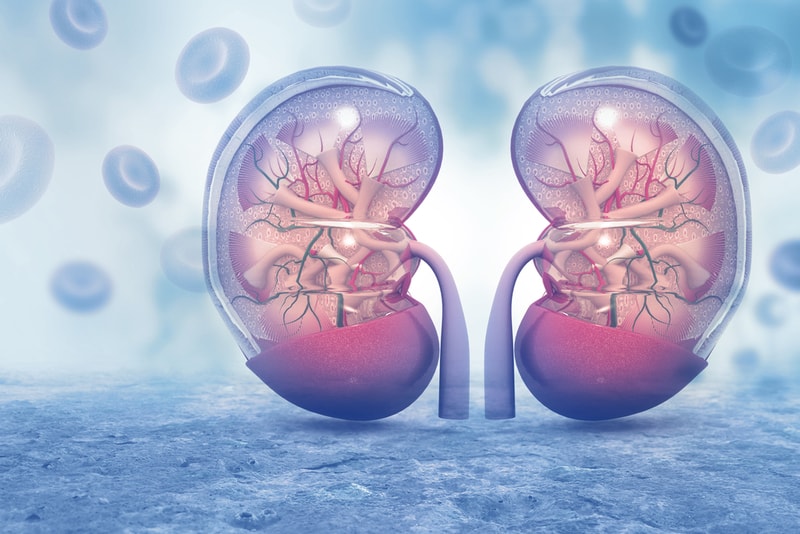
The symptoms and effects of lead exposure have been presented in the sections above. While most of them are like the symptoms caused by other illnesses, it is still important to understand how it specifically impacts our health as it can cause irreparable damage to our body. Some could bring short term effects while some could have long term impact on your health. Having more lead in your body than the normal or acceptable level can cause serious and permanent damage to your body or health. Below are some of the long-term effects of lead poisoning:
- Anemia – this is known to make a person very weak and unable to fight infections and other illnesses. If not treated, this can be fatal. Anemia occurs when there is a decrease in the ability of the blood to carry enough oxygen.
- Damage to the nervous system – while this could be temporary, lead poisoning can result in brain damage. The symptoms of nervous system damage caused by lead exposure are poor memory, vomiting, tremors, restlessness, convulsions, irritability, muscular damage or weakness, and many others.
- Kidney problem – this could include urinary problems. This is serious as the problem does not normally become known until the kidney is severely and permanently damaged.
- Reproductive problem – this is a serious problem that every man or woman could be very afraid to have. Lead exposure can decrease the fertility of a woman and it can cause irregular menstrual activities. On the other hand, lead poisoning can decrease men’s sex drive. It can also cause sterility or impotence.
- Lead poisoning can also cause miscarriage. Several birth defects such as mental retardation, physical deformities and behavioral disorders may also happen if the parents have already been exposed to lead poisoning before.
Sources of Lead Exposure
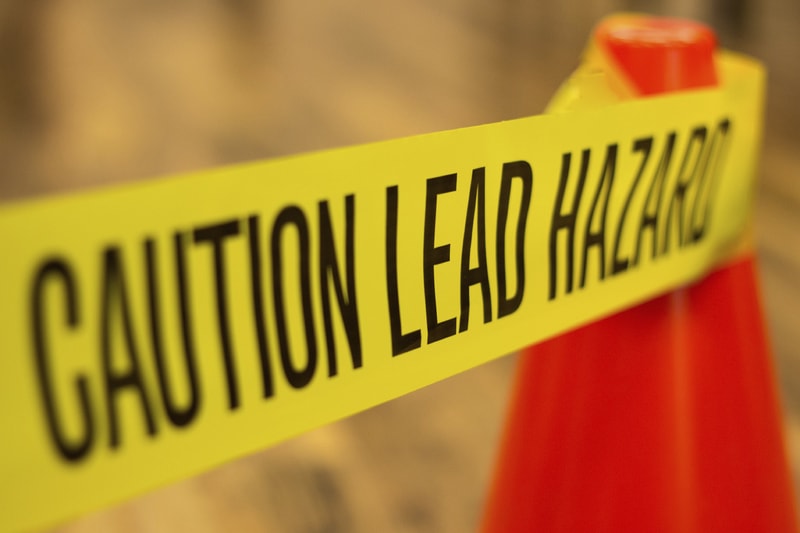
Lead poisoning can affect any person but the risk is higher in children. As a matter of fact, based on a study made in the US, more than 500 thousand children between the ages of 1 and 5 have lead content in their blood that is high enough to cause damage to their growth and health.
This is a serious matter as even with proper treatment, lead poisoning can cause permanent damage to the development of a child. Their brain and other parts of their bodies are small and still growing, hence they are at great risk to suffer from lead poisoning. And unfortunately, many people, especially parents, are not very familiar as to how lead poisoning can be prevented.
Lead is not only present in chipped paints, it can also be present in materials or places you least expect to have it such as your garden, in the playground, and many others. Below are some of the main sources of lead for your awareness:
- Lead dust – many of us may worry about our babies eating lead paint in big pieces. While it can surely poison our kids, we have to be aware that it’s the small chips of paints or traces of dust that put your babies at a bigger risk according to experts.
Production of lead-based paints has been stopped since 1978, but keep in mind that older or ancient homes could still have it. Lead can be present in the air, dust, and other areas and these can be picked up by your children when they put their hands in their mouths. They can also inhale lead dust in the air.
As parents, you have to know that even a small amount of lead can already cause serious harm to your children. Hence, if your home was made or remodeled prior to 1978, then have it inspected for lead. Get the services of a professional contractor specializing in lead prevention or detection. This is important if you are planning to renovate your house as you should always assume that lead is present in the area to be on the safe side. A certified contractor will be able to help you contain it and totally remove it from your house through a safe process.
- Lead from home renovations – as mentioned earlier, renovation of houses can also cause lead poisoning or exposure especially if you have an old house. It is safe to assume that a lead-based paint was used on your walls, thus renovating it may trigger lead particles to come out and be inhaled by you or your family members.
A study shows that people who are present in an area being renovated have 30% bigger chance of getting exposed to lead than those who are not there. Hence, if you have an old house, perform the necessary precautions before deciding to have it renovated. Work with a certified contractor to inspect the house and make sure that lead exposure will be prevented during the renovation activity.
- Lead in your playground or backyard – as mentioned earlier, production of lead-based paints was only stopped in 1978. Hence, almost all the structures that were built before that year such as houses, fences, playgrounds, schools, etc. could have been painted with a lead-based paint and, as the paint deteriorated and chipped off, might have contaminated the soil or surface beneath as well.
This means that children playing in your playground or backyard can come in contact with lead through their hands. Contaminated soils can also affect the plants or vegetables that are grown in your backyard. Some artificial turfs and other rubber surfaces used in sports and playgrounds can also have lead components. To address this, make sure to work with the local health organizations in your area to have the soil tested and understand how it can impact your health through the plants or vegetables that you grow in your backyard.
- Lead in toys – lead in toys has become a major news recently. It can either be in the paint or the plastic itself. Children sucking or putting the toys in their mouth or simply touching them and not washing their hands properly may cause lead poisoning.
Determining which toys have lead can be challenging, but you may start by checking if the one you bought for your child is part of the recall list. You can visit www.recalls.gov for more details.
Be careful as well in buying cheap toys or those that you can buy from street markets. Plastic jewelries may also contain lead.
Make sure to keep a close watch on your child whenever he or she is playing with toys. Be on the safe side by giving your children unpainted toys, toys made with natural materials such as wood, books, and similar items.
- Lead in pipes – based on records, between 10% and 20% of lead poisoning in children is due to contaminated water. This is because of the lead present in the materials used in plumbing especially in the year 1930 and the years before that. As a matter of fact, some pipes were even made using lead itself. Brass fixtures, on the other hand, can also have lead component.
Keep in mind that pipes used in new homes are also at risk of having lead as some plumbers are still using lead solder in joining copper pipes. This puts the water directly exposed to lead. Because of this, new houses or those less than 5 years old are at risk of lead exposure.
After 5 years, mineral deposits are known to start accumulating in the pipes and this protects the water against the lead component in the pipes solder. Also, be aware that wells can also have lead contamination. Like what was suggested earlier, contact your local health organizations to validate any lead contamination in the water that is coming out of your faucet. Sometimes, the contamination may not come from your house plumbing, but from the water source itself.
How to Prevent Lead Poisoning

As discussed in the previous articles, lead is considered as an extremely poisonous or toxic metal element, especially in humans when it is swallowed or inhaled. Lead can be found at homes and in the environment, which means that humans can be exposed to it every day. It is found in paints, pipes, dirt or dust, and many others.
High exposure to lead or high amount of it in the blood can cause serious damage to a person. It can cause seizure, physical and mental damage, kidney damage, slow growth or development in children, and many others. It can also be fatal so the matter should be taken seriously. Because of this, know how to prevent lead poisoning as shown below.
- Identify the risks of lead at home – lead prevention should start at home. This can be done in many ways as presented below:
Know when your house was built – if your house was built on or prior to 1978, then extra precaution should be practiced to prevent lead exposure or poisoning as your house could certainly be at high risk for lead content because of the paints or pipes that have been used in the house. The title of the house or its purchase documents should show when the house was built. If these documents are not available, check with the local county office for the record.
Check for lead-based paint – work with a professional contractor for this activity. If the paint in your house is still intact, meaning it has not yet cracked or chipped off, then the risk is not yet high.
Check the pipes used in your bathroom or kitchen – aside from inspecting the paints used in your house, a professional contractor should also check the pipes used for plumbing activities in your kitchen or bathroom. A professional contractor would know how to get this inspection completed correctly and safely.
Coordinate with your landlord – if you are only renting your place, then make sure that you coordinate with your landlord before doing the steps above. Your landlord should have a copy of the last lead inspection that was conducted for the house, if there was any. If it is not available, then you can submit a petition at your local county office to have the place inspected for lead at the cost of the landlord.
- Do your part in preventing lead exposure or poisoning – the ways to prevent lead poisoning should start in yourself by doing the following:
Wash or clean your hands properly and frequently – This is the best way to prevent lead poisoning and any type of germs from spreading. Make it a habit to wash with water and soap before eating or putting your hands in your mouth. Do monitor your family members as well especially your children. Educate them about the importance of washing their hands regularly. Do not let your children play with soil or directly on top of it. Make sure that the surface is protected or you give them gloves while playing. Or better yet, make them play inside the house or just read books.
Do not drink tap water when it is warm – old houses may have used pipes with lead and this could directly contaminate the water passing through it. However, be aware that lead is most likely to be absorbed by water if it is warm. Hence, if you will drink directly from the faucet, make sure that it is cold.
- Clean your house regularly – if your house has been found positive to have lead, make sure to clean the house regularly and to wear a mask while doing so. Cracking paint, a lead-based paint, can contaminate the surface underneath and its particles can be inhaled through the dust in the air.
- Buy lead-free products – there are items or materials that have been confirmed to have lead. These are items we use in the house everyday so we are at high risk for lead exposure. Hence, be mindful not to buy products that are known to contain lead.
Look for labels confirming that a product is free from lead. The society has become more aware of the threats of lead so many manufacturers/organizations make sure that their products are labelled properly for lead content
Do the same when buying utensils and other kitchenware as they could contain lead as well. Look for the lead-free label before buying them. Do not buy 2nd hand products as they may not show the label anymore.
Review the lead recall list, especially for toys, and dispose them off immediately and properly.
- Remove shoes or slippers before entering a house – the dirt that have accumulated on the surface of one’s shoes or slippers could be contaminated with lead. Prevent lead from entering your home. Make sure that you, your family members, and guests leave their shoes or slippers at the front door.
- Be healthy all the time – maintaining a healthy lifestyle is another effective way to prevent lead poisoning. Food rich in calcium and iron are recommended by health experts. For children, 200mg of calcium is recommended for the 1st 6 months. The amount should increase as a child gets older. From 200 mg, it should increase to 700 mg for those ages 1 to 3 while children up to 8 should get at least 1,000 mg of calcium.
At age 18, a person should already be consuming 1,300 mg of calcium. For adults or those ages 19 – 51, they should be consuming 1,000 mg of calcium while ages 52 and up should have a calcium intake of 1,200 mg.
When it comes to iron intake, children up to 6 months should have 0.27 mg while 7 to 12 months should get 11 mg. Children ages 1 year old to 3 years old require 7 mg iron, 10 mg for 4 to 8 years old, 8 mg for 9 to 13 years old, and 11 to 15 mg for 14 to 18 years old.
Foods that Contain Lead
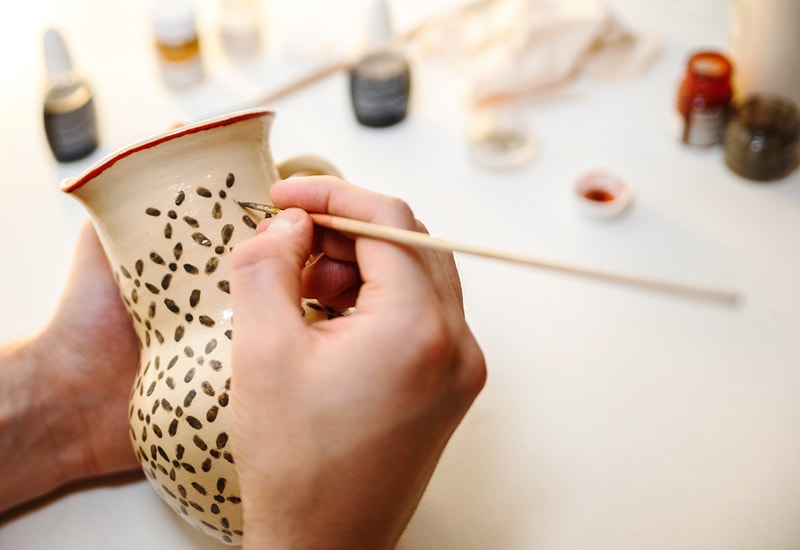
In our goal to understand lead and its impact to our health, we have to be aware that food can sometimes be the source of lead. While they may not naturally contain lead, the way we handle food may contaminate them and cause them to be the source of lead poisoning in your family. Below are some of the reasons or situation where food can be the source of lead:
- Food that is stored in open cans particularly the imported ones.
- Food served or stored in pottery. Keep in mind that it should only be used for decoration purposes.
- Food or drinks served in lead crystal materials.
- Food or other products grown or manufactured in other countries could contain high amounts of lead. Because of this, the Food and Drug Administration or FDA in the US has implemented stricter guidelines when it comes to importing foods from other countries. Chili and tamarind candies are examples of imported food that could have high lead content as they are wrapped using a wrapper that contains lead 25% higher than the recommended level.
- Fruits and vegetables grown in a soil contaminated with lead may also contain lead and cause poisoning.
- Plants, vegetables, and fruits sprayed with pesticides that have lead can also be sources of lead exposure or poisoning.
Products that Contain Lead
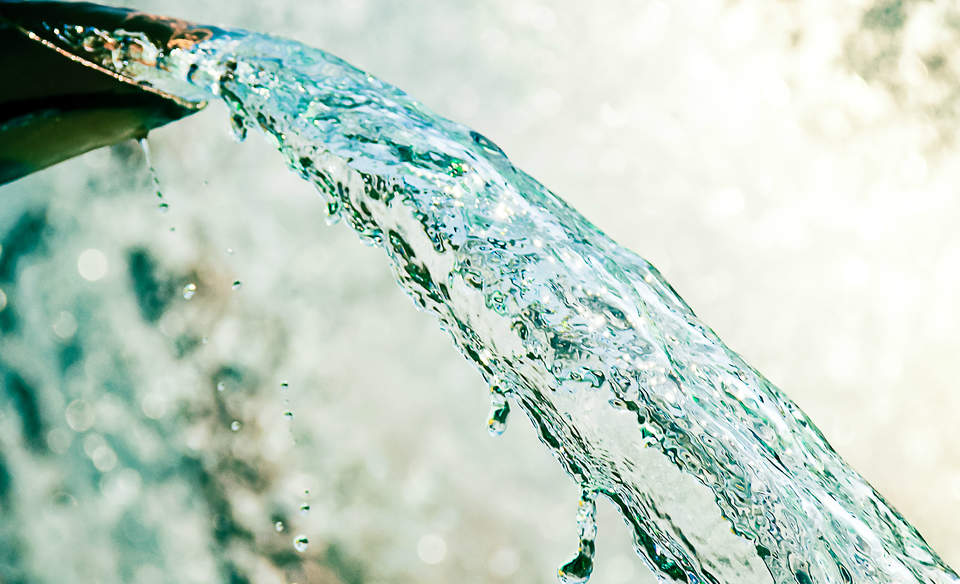
We already know that lead is a toxic element can cause irreversible health problems especially to our children. Hence, it is important that we make ourselves familiar with the different sources of lead. Some of them are products that we use every day. Below are some of them for you to be aware of:
- Paints and other coloring materials
- Artists materials
- Jewelries
- Lead crystals
- Decorative items, figurines, and the likes
- Protective coating or decorative painting on many products out there
- Fastening and/or trims on clothes
- Pencils
- Fishing accessories such as sinkers and the likes
- Cosmetic products
- Stained glass doors and windows
- Batteries
- Water pipes
- Toys
- Pottery items, ceramics, and similar products
- Soil
- Firearms and lead bullets
Lead Poisoning Symptoms in Adults

Although children are more susceptible to lead poisoning, it is important to keep in mind that adults are also at risk. Lead can be inhaled in the form of dust or dirt from a contaminated house or could be ingested when we touch something that has lead in or on it. In these cases, lead enters the digestive or respiratory systems and is then released throughout the body through the blood.
Lead is also known to pile up in the bones and then released again through the blood, where body organs are exposed to it again after the initial contact. Over the years, the impact of lead to one’s health has been fully documented. It damages all body organs and can affect their function in differing degrees. The symptoms can also differ per person. Below are some of the effects of lead poisoning in adults:
- Neurological symptoms
- Peripheral neuropathy
- Inability to concentrate
- Fatigue or irritability
- Loss of hearing
- Wrist drop/foot drop
- Seizures
- Encephalopathy
- Gastrointestinal effects
- Nausea
- Constipation
- Dyspepsia
- Lead line on gingival tissue
- Colic
- Reproductive effects
- Miscarriages
- Decreased or weakened sperm motility and count
- Abnormal sperm count
- Heme synthesis effects
- Anemia
- Erythrocyte protoporphyrin elevation
- Renal effects
- Chronic nephropathy with proximal tubular damage
- Hypertension
- Other
- Arthralgia
- Myalgia
Lead Poisoning in Children

It has been mentioned in the earlier sections that children are at high risks to suffer from lead poisoning. Since a child’s body is not yet 100% developed, high amounts of lead can affect the development of various organs in a child’s body.
One record shows that about 4% of children had suffered from lead poisoning in the United States. This number could be higher in other regions or countries.
The highest incident of lead poisoning is caused by lead-based paints used in ancient or old homes. Children are at risk since they are known to put their hands in their mouth after touching various objects without properly cleaning their hands.
Lead could also be inhaled in the form of dust or dirt. Soil and the flooring can also contain lead from chipping off paints and some other sources. Since most children are known to spend much of their time on the floor crawling, they are prone to getting exposed to lead.
Primarily, it can affect the brain, bone marrow, and kidneys. Effects of high level of lead are headaches, stomach pain, confusion, vomiting, seizures, muscle weakness and pain, anemia, and loss of hair. It is also important to know that even a small amount of lead can cause some problems like inability to concentrate, behavioral problems, difficult or slow learning capabilities, and decrease in IQ.
They are more prone to poisoning due to their weaker immune system. They are at higher risk as well since they do not know how to properly protect themselves from its possible causes. They can’t wash their hands on their own, they put their hands in their mouth without thinking if it’s dirty or not, and they spend too much time on the flooring playing. All these activities or facts about babies or children make them more susceptible to get exposed to lead.
Lead exposure can be fatal especially in children since their organs are still forming or not yet fully developed. The damages that lead poisoning can bring to children could be serious and irreparable. It can slow down the development of a child or baby both physically and mentally. The growth of the baby’s brain may be hampered and this can have an impact on the total development of a child. It can also impact a child’s learning capacity, behavior, and mental health.
Signs and Symptoms of Lead Poisoning in Babies

To better protect your babies or children against lead, it is important to be aware of the various signs and symptoms of lead poisoning in babies or children. They are shown below for reference:
Symptoms in newborns:
- Those exposed in lead before birth are normally born prematurely
- Very low weight at birth
- Slow or limited growth both physically and mentally
Symptoms in children:
- Developmental delays
- Behavioral problems or mood problems/irritability
- Learning difficulties
- Loss of appetite leading to weight loss
- Fatigue or sluggishness
- Abdominal cramps or pain
- Constipation
- Vomiting
- Loss of hearing
- Seizures
What Type of Diet can Help Block the Storage of Lead in a Child’s Body?

Since children are more prone to lead poisoning, it is important that you keep their health a priority. There are food or vitamins that can help prevent the serious effects of lead exposure. Make sure to feed them the following to maintain a healthy body and boost their immune system:
- Fresh fruits and vegetables
- Whole grain snacks or crackers
- Cheese
- Yogurt
- Foods high in calcium such as milk, cheese, tofu, food with milk, green vegetables like spinach, broccoli, collards, and the likes.
- Foods rich in vitamin C like oranges, mangos, grapefruits, green peppers, fresh juices, and tomatoes.
- Foods rich in iron such as lean meats of chicken, pork, and beef. Fish, sardines, and tuna are also good. Beans, cereals, and dried fruits like raisins, prunes, etc. are also rich in iron.
- Foods that have low fat content.
- Baked, steamed or boiled foods instead of fried ones.
- Lean meat
- Do not let your children get used to eating junk foods such as chips and crackers, French fries, and the likes.
- Avoid donuts and pastries as well.
- Don’t use too much oil or butter in the food you are preparing for your children.
How to Reduce Lead Levels in Blood
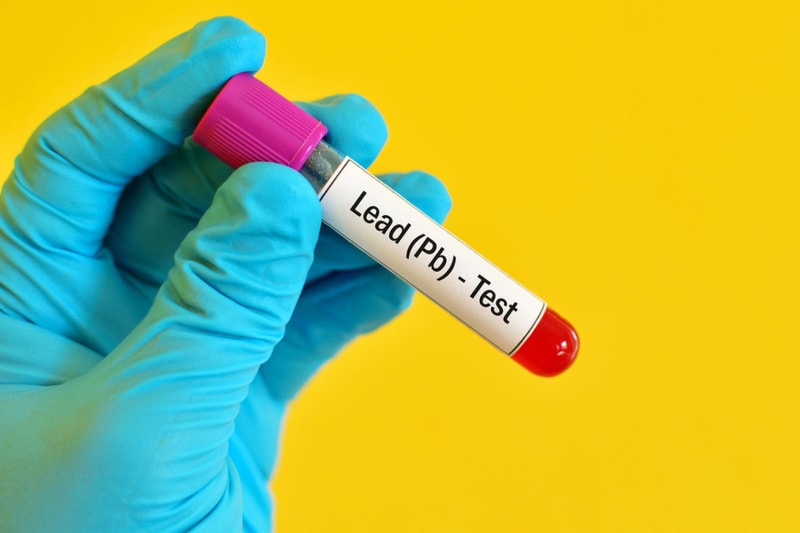
Lead is absorbed by the body when it is inhaled or digested when we put our hands in our mouth after touching an item or product that has been exposed to lead. It gets stored in the bones and is distributed in the body through the blood. When the blood gets too much lead, poisoning or several problems start to occur. Because of this, it is important for a person to know how to reduce lead levels in the blood or in the body of a person.
- Lead and iron both compete to be absorbed by a person’s digestive system. A person or child who eats food rich in iron all throughout the day will most likely absorb a small amount of lead. Food rich in iron are red meats, chicken, raisins, prunes, vegetables, and many others. Your doctor may also recommend that you take iron supplements or multi-vitamins with iron to treat iron deficiency and ensure that your body gets the right amount of iron every day.
- Like iron, consuming foods rich in calcium can also prevent your body from absorbing lead. Foods rich in calcium include yogurt, milk, canned salmon, cheese, and many others. It is recommended to consume at least 4 servings of foods rich in calcium daily.
- Vitamin C, on the other hand, does not prevent lead absorption, but makes the body absorb iron more easily, thus makes eating iron-rich food truly effective in fighting lead poisoning. Sources of vitamin C are oranges, fruit juices, grapefruits, berries, and the likes.
- Make sure to also eat more often and do not allow yourself to get hungry. Studies show that the body absorbs lead more easily when a person is hungry or when his or her stomach is empty.
- Fat promotes the pile up of lead in the body. Hence, it is important to prevent foods that have high fat content.
How to Get Rid of Lead Poisoning with Treatment

Previous articles above have shown you ways to prevent lead poisoning including what to eat and what to avoid daily. But for extreme cases of lead poisoning, there are 2 treatments a doctor may recommend to you.
- Chelation therapy – this treatment is done by giving a person a medication that will bind with the lead in the body. The lead is then released when the person urinates. This treatment is often recommended for young children with lead level in blood of 45 mcg/dL or higher. In adults, this treatment will work when the lead content in blood is high or there are already symptoms of lead poisoning.
- EDTA chelation therapy – this treatment is given by injection and is normally taken if the lead content is higher than 45 mcg/dL and if a child or person could not tolerate the medication provided in chelation therapy.
Where is Lead Found in the Nature?

Lead is present in almost anything around us. It can be found in the air, the water, the soil, inside our homes, and many others. The environment or nature around us gets contaminated because of human activities.
- The use of lead-based paints in ancient homes is known to have contaminated the soil underneath it when it started to crack and fall off the ground. This can be spread when we step on it and bring our slippers and shoes inside the house. Plants, fruits, and vegetables grown from a contaminated soil can also be contaminated and be sources of lead.
- The air we breathe can also be contaminated by lead. This can happen when a particle containing lead further breaks down and becomes dirt or dust. When this happens, the lead dust can contaminate the air and when it is inhaled, a person may suffer from lead poisoning or exposure.
- Water can also be contaminated by lead through the pipes or plumbing materials that have been used in your homes. The pipes themselves are sometimes made of lead and this can directly contaminate water passing through them.
What is Lead Used for Today?
Because of the many health issues caused by lead exposure or poisoning, several regulations have changed the way we use lead in the modern times.
- In the middle of 1980s, a major change on the use of lead took place because of the many environmental regulations that were released. Many lead-based materials have been replaced to stay compliant to the said regulations.
- In the early 2000s, lead was primarily used in manufacturing lead-acid batteries.
- Today, lead is also used in oxides in ceramic sand other glass materials, ammunition, casting metals, and sheet leads.
Lead in Food

Eating healthy food, especially the ones rich in iron, calcium, and vitamin C, can help prevent lead poisoning. Surprisingly, however, some foods have been detected to contain lead and have been the source of lead exposure among young children.
In children, there is no such thing as safe level of lead. Even a small amount can cause some health problems that may affect his or her physical and mental development. In many years of research done with the data from Food and Drug Administration or FDA, some food, particularly the ones we feed to our babies, have been found to have lead content. Below are the key findings for your awareness:
- Lead was found in 20% of newborn food samples as compared to the 14% for the other types of food.
- 8 types of newborn foods had significant lead content in 40% of the baby food samples.
- Grape and apple juices and carrots in baby food forms had samples with lead components than the regular forms.
- Some root vegetables have been found with lead as well – 86% of sweet potatoes and 43% of carrots from the samples.
When was Lead Paint Banned and Stopped being Used?

Lead-based paints or paints with lead were banned in the United States in 1978. In Canada, the ban and regulation started in 1976. Lead-based paints are not yet banned in India. As such, it has been found out that 31% of houses in India had paints with lead components.
Lead Paint Test Kit
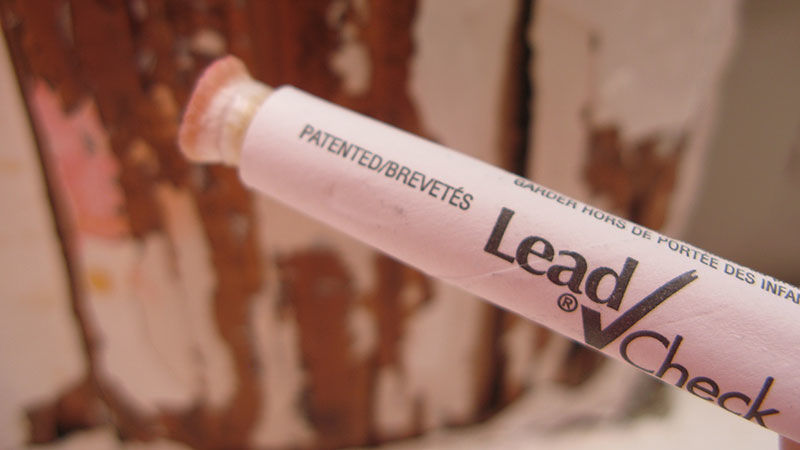
Having your house tested by a professional for lead paint can incur you a big amount of money. While working with a professional is highly recommended, getting a lead paint test kit is an option especially for those who do not have enough money to spend on professional inspection. This kit costs only between $20 and $40. This test kit also allows homeowners to perform the test DIY style safely. Many homeowners who tried this option have confirmed that the kit is a good way to determine if there is a lead problem to address.
You can get various lead paint test kits in the market, but there are only 2 recommended and EPA-approved test kits – the Klean – Stip EKLP64000 D-Lead Paint Test Kit and the 3M Lead Check Swabs. Both kits use color change methodology or technology in identifying whether there is a problem or not. The said technology provides a simple way to read and view results in a short period of time.
The Klean – Stip test kit is costlier than the other type of kit. It is also EPA-certified to be used in testing hard materials such as wood trim and soft materials like drywall. It is color coded to show increments of the level of lead.
On the other hand, 3M test kit will only show you whether the result is either positive or negative. The Klean – Stip test kit also has an expiration date so make sure to know what it is before deciding to use it. The kit will allow you to test 6 samples while 3M test kit is made available in packages of 2, 8, and 48.
Lead Paint Disclosure
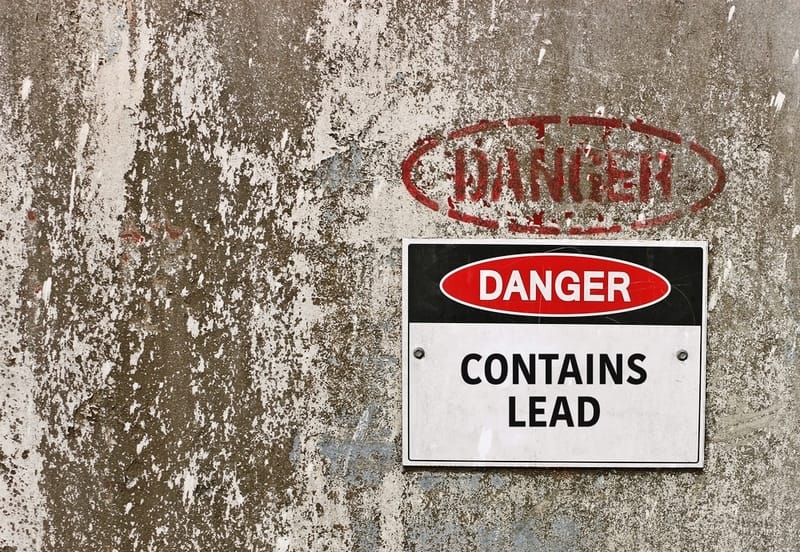
Because of the negative impact of lead in our health and the environment, various regulations have been created to raise the awareness about lead causes, effects, and prevention. A law called Residential Lead-Based Paint Hazard Reduction Act of 1992 has been passed in the Congress, which aims to protect all families from lead exposure from dust, soil, and paint.
Section 1018 of the said law requires proper disclosure of lead-based paint usage and possible lead-based paint exposure when leasing or selling a house or a property. Under this law, landlords or sellers are required to perform the following:
- Provide an EPA-approved pamphlet that can be used to identify lead-based pain hazards.
- Disclose information about lead-based paint hazard in the house or property. The landlord or seller must also specify the location of the paint containing lead or where the lead hazard is, and the condition of the paint and the painted surface.
- Provide previous reports and records related to lead-based paint and the hazard it brings. This could be a document of previous lead-based paint inspection.
- Along with the contract, include a document showing a lead warning statement and confirmation that the landlord or seller has complied with all the requirements.
- A landlord or seller must give the buyer 10 days to perform an inspection of the area for lead-based paint and assess the risk properly. Both parties can either shorten or extend the period upon the agreement of the buyer and the seller or landlord.
Lead Water Pipes
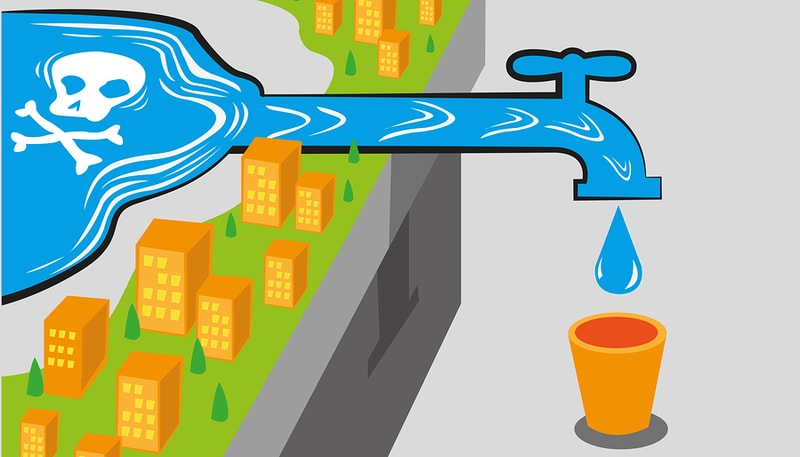
Lead is normally used in piping because of its ability to prevent pinhole leaks. At the same time, lead is soft and flexible enough to form its shape based on the plumbing requirements. However, because it has caused water contamination, many plumbing businesses have voluntarily made a move to reduce the use of pipes containing lead in the plumbing activities that they do.
Lead Water Test

Experts say that around 10% to 20% of lead exposure in humans is caused by contaminated water. And it’s even worse in babies or children as the percentage is higher at 40% to 60%. Water contamination is normally caused by the materials or pipes used in the plumbing requirements in a house. While this is most likely true in older homes, lead problems in pipes can also be found in newer houses.
As of Jan 2014, however, newly manufactured water fixtures, faucets, pipes, and other plumbing materials must be compliant to the lead-free requirements set by the industry. But despite this requirement, be on the safe side and ensure that your water is tested for any lead contamination before drinking it or using it for cooking.
- The first step is to get the services of a professional contractor specializing in water inspection. The contractor you hired has the right tools to test the water from your faucet for any lead content.
- If the result is positive, then you should coordinate with your water supplier to check if their water pipes have lead or if they have been tested for lead content. Under some laws and requirements, your water supplier will be compelled to fix the problem at no cost to you.
- If the water pipes from the water supplier are lead-free, then make sure that the pipes used in your house are inspected. A professional contractor can do this test for you and recommend a solution to fix the issue immediately.
Lead Based Paint Pamphlet from the EPA
The United States Environmental Protection Agency or EPA has released a pamphlet entitled “Protect Your Family from Lead in Your Home”. It was also supported by the United States Consumer Product Safety Commission and the United States Department of Housing and Urban Development.
The pamphlet aims to, as the name of the pamphlet suggests, protect families from lead. The pamphlet gives homeowners some tips if they are planning to rent or buy a house. It also discusses how our body gets exposed to lead, how we can prevent it to protect yourself and your family, and where you can find more information to learn about this serious matter.
The pamphlet also shows what the law requires when it comes to lead disclosure and how they can protect you from lead. The last page of the pamphlet shows some helpful information about lead and its presence in soil, dust, paint, and everything around our home. Indeed, the pamphlet is a must-have by every homeowner.

Disclaimer: This article should not be mistaken for advice from a doctor. If you suspect you may or someone you know may be dealing with lead poisoning, seek professional help.